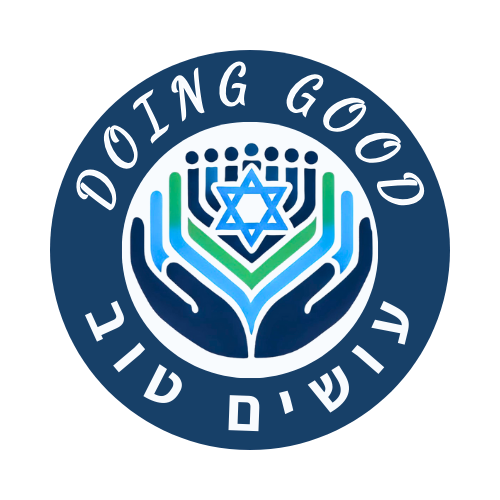A Reality of Challenges – and an Opportunity for Partnership
The third sector in Israel constitutes an essential pillar in the social fabric of the country. Nonprofit organizations and associations play significant roles in welfare, education, health, absorption, employment, culture, and community fields. Yet alongside this impressive activity stands a persistent and ongoing challenge: how to raise sufficient resources to meet growing demand, sustain existing programs, and expand impact?
Most NGOs in Israel operate on limited and tight budgets, with the desire to give more always exceeding financial capacity. This is where the importance of strategic partnership with philanthropic foundations comes into play — a partnership based not only on financial support but also on shared values, a common vision, and a deep understanding of the challenges on the ground.
A Philanthropic Foundation: A Body with Two Faces — Professional and Value-Driven
To understand how to properly approach a philanthropic foundation, it is important to understand its structure. Almost every foundation operates with two layers:
- The professional layer — the foundation staff: professional managers, evaluators, data analysts, content and program developers. Their role is to review requests, advise, accompany, and recommend to the foundation’s leadership.
- The value-driven and strategic layer — the foundation owners: sometimes a philanthropic family, a business corporation, a public body, or a Jewish community abroad. These are the people who lead the vision, decide on fundamental allocations, and set the foundation’s social agenda.
Therefore, in the initial stage, it is crucial to map out the real influencers behind the foundation — who stands behind it, what motivates them to act, and what possible connection exists between them and your NGO or field of activity. It is highly possible that a personal connection with one of the foundation’s board members — a person from the Jewish community abroad, a business partner, or acquaintance — will open the door and help advance the request.
Not Every Foundation Fits — and Not Every Request Is Relevant
Approaching philanthropic foundations is not a “numbers game.” Flooding foundations with generic and irrelevant requests will not lead to results and may sometimes even harm the organization’s reputation. To build the right connection with a foundation, one must invest in thorough and precise research:
- What are the foundation’s areas of interest?
- In which geographic regions does it operate?
- Which target groups does it promote?
- What existing programs currently receive support?
- Does the foundation even accept unsolicited applications or only those initiated by itself?
Only if there is a clear match may one proceed. The approach must be focused, personal, and reflect a genuine understanding of the foundation and its priorities.
One Phone Call Is Worth More Than Ten Emails
Instead of sending emails to a general contact, it is always preferable to try to initiate a phone call with a representative of the foundation’s management or professional team. In a personal — even brief — conversation, valuable information can be obtained that is not always available on the foundation’s website:
- What are the foundation’s core values?
- Are they open to requests from new NGOs?
- In which fields do they currently have special interest?
- What do they want to see in a supported NGO?
- Which organizations are they already supporting — and what can be learned from them?
Such information allows for strategic precision in the approach, saves time, conveys professionalism, and creates a positive first impression. Sometimes, a single conversation can lead to an invitation to submit a formal request — something that would not happen through a general email.
Conclusion: Building a Partnership Is a Relationship Process, Not Just Funding
A partnership with a philanthropic foundation is a process requiring patience, groundwork, research, and relationships. It is based on trust, alignment, and shared values — not just budgetary needs. When the approach is done correctly, at the right timing, with an accurate message and a true understanding of the foundation’s agenda, it can lead to a long-lasting partnership that will impact not only the NGO’s budget — but thousands of lives in Israel.
Instead of acting as “beggars for donations,” one should act as partners for change. Build relationships with foundations, understand the people behind them, respect their time and vision, and offer programs truly aligned with their value system. This is how true partnerships are built — and how a better society is built for us all.
Writing a Proposal for Partnership and Grant from a Philanthropic Foundation — The Best Way to Succeed
When an NGO approaches a philanthropic foundation with a request for partnership and investment, it is important to remember that this is not merely a financial request but a proposal for a genuine and meaningful partnership. Writing a professional and compelling proposal tailored to the foundation and its vision is the key to success.
The proposal is the central document where the NGO presents itself, its program, its needs, and the added value the foundation can provide. It should be constructed in an orderly, clear, and focused manner.
Important Guidelines for Writing a Winning Proposal
- Alignment with the foundation’s values: Every proposal must be tailored to the agenda and interests of the foundation. Prior deep research is essential.
- Clear and focused language: Avoid unnecessary terminology and extraneous information. Focus on quality content.
- Emphasize added value: Show how the support will create a real, measurable, and meaningful change.
- Create personal connection: The letter and proposal are not just documents — they are an opening for dialogue and long-term partnership.
- Use quotes and personal stories: Add an emotional and relatable aspect.
In Summary
Writing a professional, clear, and compelling proposal according to the foundation’s format and requirements is the key to building a true and successful partnership with philanthropic foundations. This is the opportunity to present the organization in the best possible light, illustrate needs and solutions, and create mutual trust that will lead to funding and joint advancement of important social goals.
|
Main Page or Topic |
Subsections |
Additions and Notes |
|
Research relevant foundations |
Use professional databases to identify matching foundations |
Focus on foundations that support your fields of activity |
|
Initial contact email |
Initial brief, polite, and clear approach with a request for a phone or Zoom call |
Establish direct contact before sending the full proposal |
|
LOI (Letter of Intent) |
A short letter presenting briefly the program and willingness for cooperation |
Serves as an “introduction” to the detailed document |
|
Cover page |
Organization name, date, submitter’s details and role, contact info, program name |
Add logo, relevant image, and a touching quote from a program participant |
|
Executive Summary |
– Present the organization and its goals |
Up to one page, clear and concise, suitable for foundations conducting a preliminary review |
|
Organization Description |
– Who we are |
Links to organization’s website and key profiles may be attached |
|
Social Needs Description |
– Background and characterization of the target audience |
Recommended to attach recent studies and data as footnotes |
|
Project / Social Program Description |
– Project goals |
Important to demonstrate professionalism and execution capacity |
|
Program Impact |
– Short and long-term results |
Show the added value and depth of the project |
|
Nature of the Request |
– What we request from the foundation |
Clarify expectations and roles of each side |
|
Budget Details |
– Detailed budget by phases |
Budget transparency is important for foundation’s trust |
|
Donor Appreciation |
– How the foundation will receive recognition and appreciation |
Create an additional incentive for the foundation to grant support |
|
Summary |
– Thank you paragraph |
Close with a positive and professional message |



